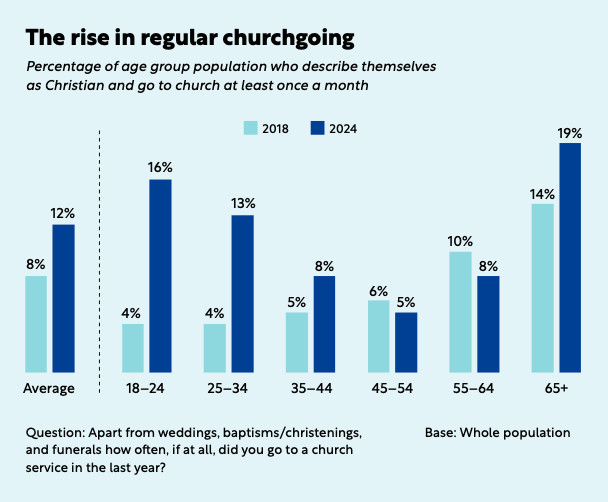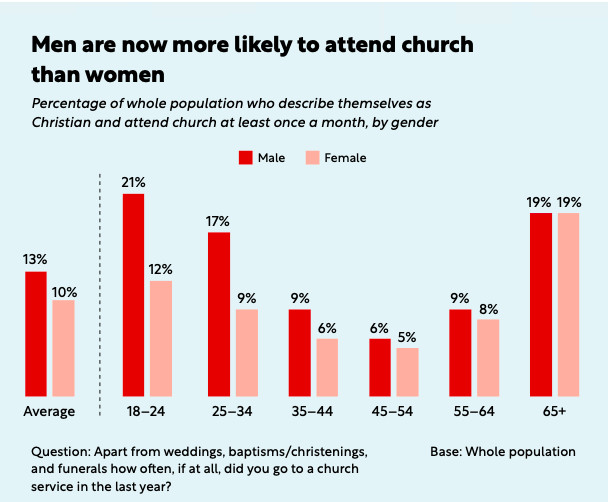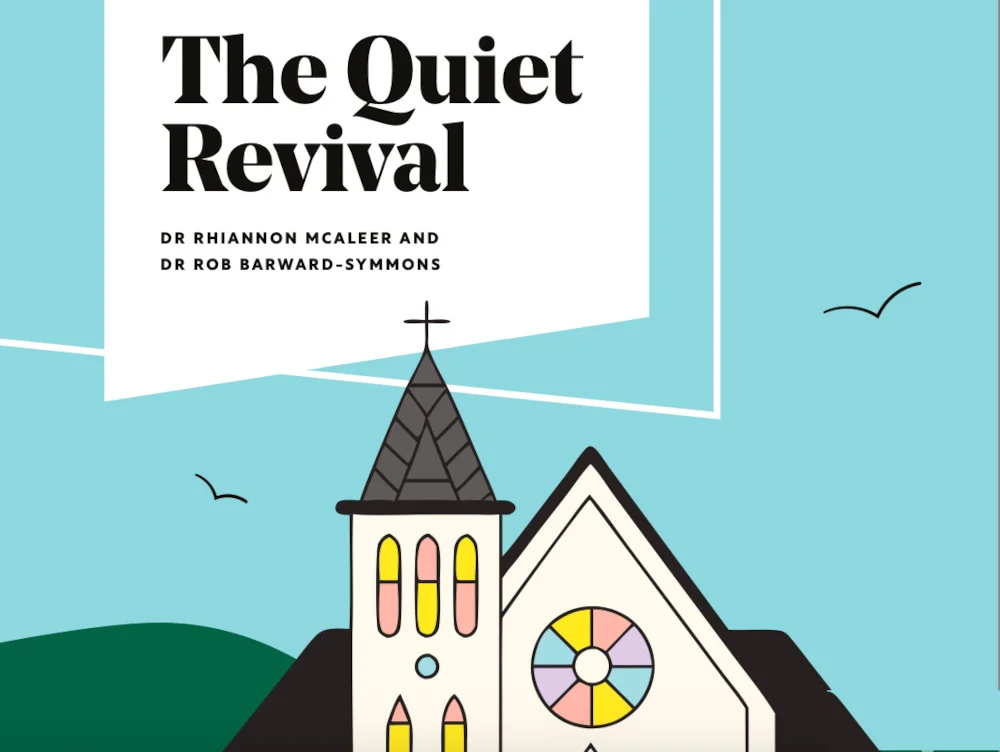Church attendance in the UK has incresed from 3.7m in 2018 to 5.8m in 2024 – an increase of 56% – according to a new report by Bible Society UK.
“Overall, churchgoing Christians now make up 12% of the population, up from 8% in 2018,” according to the The Quiet Revival report.

Two large scale surveys by the Bible Society of the UK mean the stats are robust in measuring church attendance for at least one a month. Yougov carried out the reseach, surveying a sample of 19,101 adults in England and Wales in 2018 and 13,146 adults in 2024.* Both samples have 1% margin of error at a 99% confidence level, and are based on Yougov’s population sampling.
“In 2018, just 4% of 18–24-year-olds said they attended church at least monthly. Today this has risen to 16%, with young men increasing from 4% to 21%, and young women from 3% to 12%. This is now the second most likely age group to attend church regularly.”
Comparing this Australia In 2021, around one in five Australians (21%) reported attending religious services frequently (at least monthly) according to NCLS research.
The Quiet Revival report expresses a new confidence about Christianity in the UK.
“For decades the assumption has been that while it may not die out completely, churchgoing is on a long, steady and unavoidable trajectory of decline, with each generation gradually less engaged than their predecessors. Christianity in turn would continue to recede from the public space, becoming increasingly irrelevant.
“However, this data turns these presumptions on their heads. Not only is churchgoing and religious engagement on the rise, but there is a fresh openness from non-churchgoers – and in particular young people – to encountering Christianity, the Church, and the Bible.”
Among the myths busted by the survey, a key one is the age profile of the church. Church goers 18-34 form 33 per cent of the UK’s adult church.

Children have returned and the church has got younger overall. “While previously only 14% of the Church was aged 18–34 (and 61% were over 55), now one-third of churchgoers fit within this younger bracket. While we cannot get specific numbers for under-18s, we can see that those with children under the age of 18 are more likely to be in church (13% – up from 7% in 2018) than those without children (11%). This suggests firstly that something is drawing parents to church, and secondly that we may also be seeing greater numbers of children in churches.”
“Our results present a radical challenge to long- established predictions around the future of religion – and in particular Christianity – in twenty-first century Britain,” The Quiet Revival commented. “Instead of a continuing decline we see explosive growth; instead of a Church populated predominantly by older women, we see a rising number of men and younger generations joining. As a result, the Church is not just growing but transforming, with young adults leading the way.”
Of non-church goers 31 per cent say they would attend church if invited by a friend or family member, rising to 34 per cent among 18–24-year-olds. Over half of non-churchgoers (56 per cent) would be happy for a Christian friend to pray for them, while 18% say they would be interested in learning more about the Bible
Other key findings show church going to be a positive good.
Depression: “Churchgoers show the lowest reports of feeling frequently anxious
and depressed. 63 per cnet of 18–34-year-old churchgoers say they feel close to people in their local area, compared to 25 per cnet of non-churchgoers their age.”
Activism: “Churchgoers are more likely to desire social change and to engage in social activism activities. 79% of churchgoers agree it’s important to them to try to make a difference in the world”
A possible explanation for the changes – immigration_ is dismissed by the Quite Revival report. “Is this just down to immigration? In short, no. The Church in England and Wales in undeniably changing shape and becoming more diverse, just as Britain as a whole is becoming more diverse. However, the growth in churchgoing among young people is seen at scale among young White people. While these could all be migrants, at the scale we’re seeing it seems highly unlikely.”
*corrected from 20-14
.


In the 3rd paragraph. Is 13,000 people in 2014 meant to be 2024?
Yes, thank you for spotting that.